Learn how to create an alias for your Gmail account to keep your main email address private when signing up for online services or replying to messages.
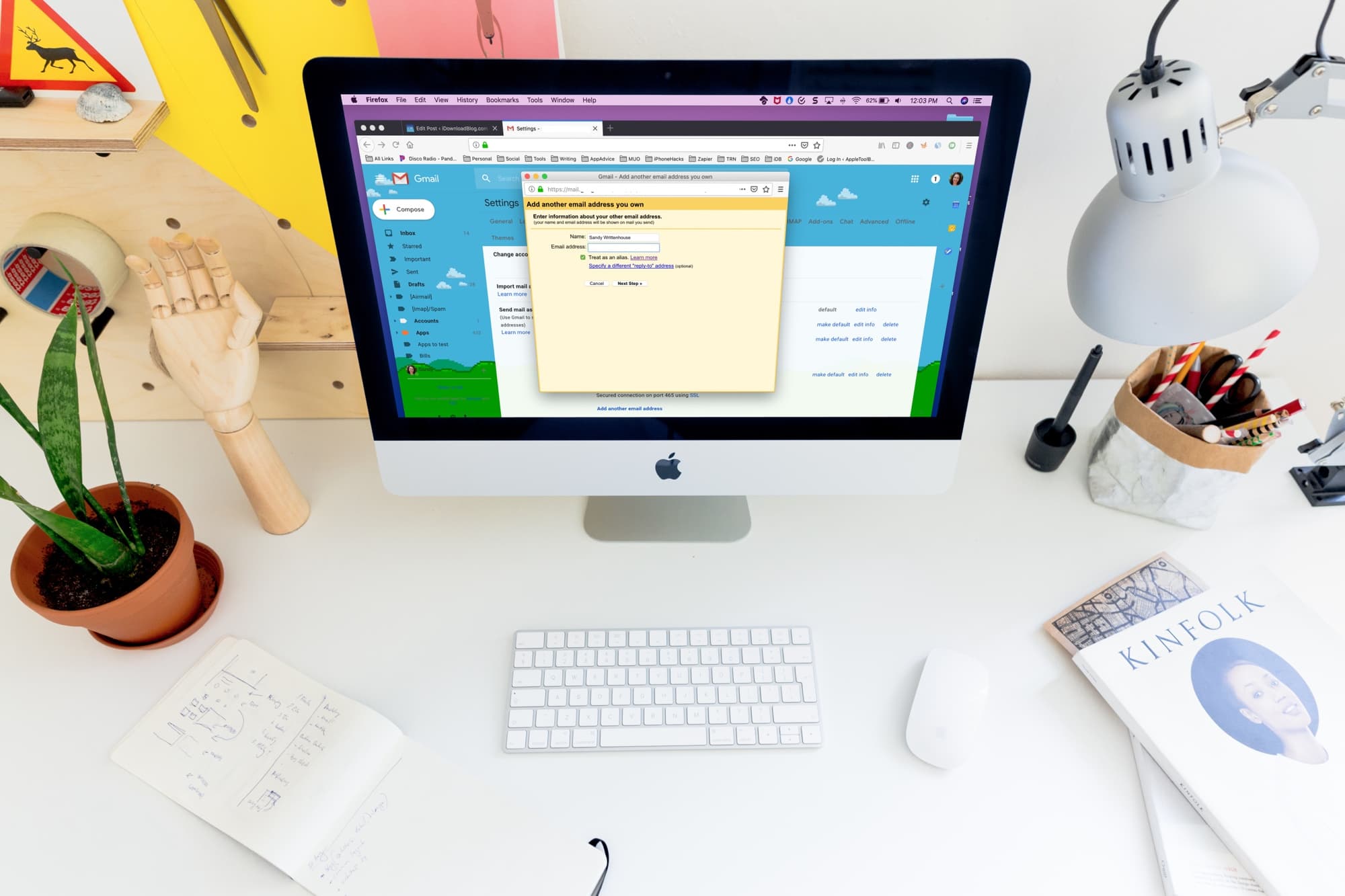
Alias, as a noun, means “a false or assumed identity.”
Instead of using your real email address, you can use an alias if you want to disguise your main Gmail email address. This is handy when you give your email address for newsletters, websites, online comments, and similar situations.
Basically, an email alias is a different name for your primary email address. For instance, if your email address is realname@gmail.com, you can set up a separate address for fakename@gmail.com. Then, use the second as an alias when you don’t want to give out your primary address but still have the emails delivered to your main Gmail inbox.
A bit more about alias
Creating an alias for your Apple iCloud email is easy. My main iCloud email is ******ankur@icloud.com. But I have set an alias as ankur.writer@icloud.com. If I have to share my email address publicly, I just share ankur.writer@icloud.com and not my real email. All emails sent to this alias address (ankur.writer@icloud.com) automatically show up in the Apple Mail app — no configuration or extra steps are needed.
However, Gmail’s approach is different, and it isn’t as straightforward as iCloud.
3 ways to add a temporary alias to your Gmail address
Here’s how to create Gmail aliases and set filters to manage your account.
Use the dot
Imagine your email address is YourName@gmail.com. Now, if you add one or more dots/periods anywhere in between your email address, Gmail will still treat it as your email. That means:
- Your.Name@gmail.com
- Y.ourName@gmail.com
- You.rName@gmail.com
- Y.o.u.r.N.a.m.e@gmail.com
are all the same email addresses.
So, in a way, all these are aliases of your original email YourName@gmail.com. Google will ignore the dots, and all emails sent to these aliases will appear in your main inbox. But most other services will treat all the above email addresses as separate emails.
Note: You must not use two dots together; that is, avoid Your..Name@gmail.com
Use the plus sign
If you add the plus sign (+) at the end of your Gmail address, Gmail still treats it as the same email. In fact, after the plus sign, you can add anything else you like, and Gmail will ignore everything that’s between + and the @ sign. That means:
- YourName+@gmail.com
- YourName+newsletter@gmail.com
- YourName+signups@gmail.com
- YourName+amazon@gmail.com
- YourName+spam@gmail.com
are the same email addresses in Google’s eyes.
So, if you sign up for a newsletter, just give them YourName+newsletter@gmail.com email. The emails sent to this will still show up in your main YourName@gmail.com account. And you can use filters to organize your emails.
Googlemail and Gmail
When you create a Gmail email (or Google account), you have your usual YourName@gmail.com email address. What you might not know is that you also get YourName@googlemail.com email address. That means:
- YourName@gmail.com
- YourName@googlemail.com
are the same email addresses.
And if some service sends you an email to YourName@googlemail.com, it will show in YourName@gmail.com Gmail account.
Thanks to the above three tips, you now know how to have temporary Gmail aliases. You can use these to sign up for different services or the same service twice (giving the service an impression of two users). And don’t forget to set up email filters to keep your main account organized of all the emails sent to your temporary aliases.
Problem with temporary Gmail aliases
Imagine you use one of the tricks mentioned above to disguise your actual email. But, in the end, all the emails you receive on your alias still show up in your primary Gmail. And if someone (or some service’s algorithm) is knowledgeable/trained, it’s no rocket science to figure out your actual email address — just remove the dots, get rid of the plus sign, or use @gmail instead of @googlemail, and they have your original email.
To address this, you can create a different Gmail account (or use your other Gmail, Hotmail, Yahoo, or personal email account) and link it to your main Gmail account. The emails sent on that second account will appear in your main Gmail account.
After this, you can give away your second throwaway email to anyone, put them on social profiles, use them for newsletter or service signups, and more. During all this, your main email stays protected.
How to set up and use an alias in Gmail
Imagine you have two email accounts:
- PersonalEmail@gmail.com (the main account that you don’t want to share with any person or service)
- PublicEmail@gmail.com (the second account that’s on your social profiles, and you share it publicly).
Now, we’ll show you:
- How to ensure all emails sent to your second address (PublicEmail@gmail) show up in your primary email inbox (PersonalEmail@gmail.com).
- After this, you’ll also see how to reply to incoming emails (on your second account) while being logged into your primary account.
Set up email forwarding
1) Open Gmail on your second account and click the settings icon, followed by See all settings.
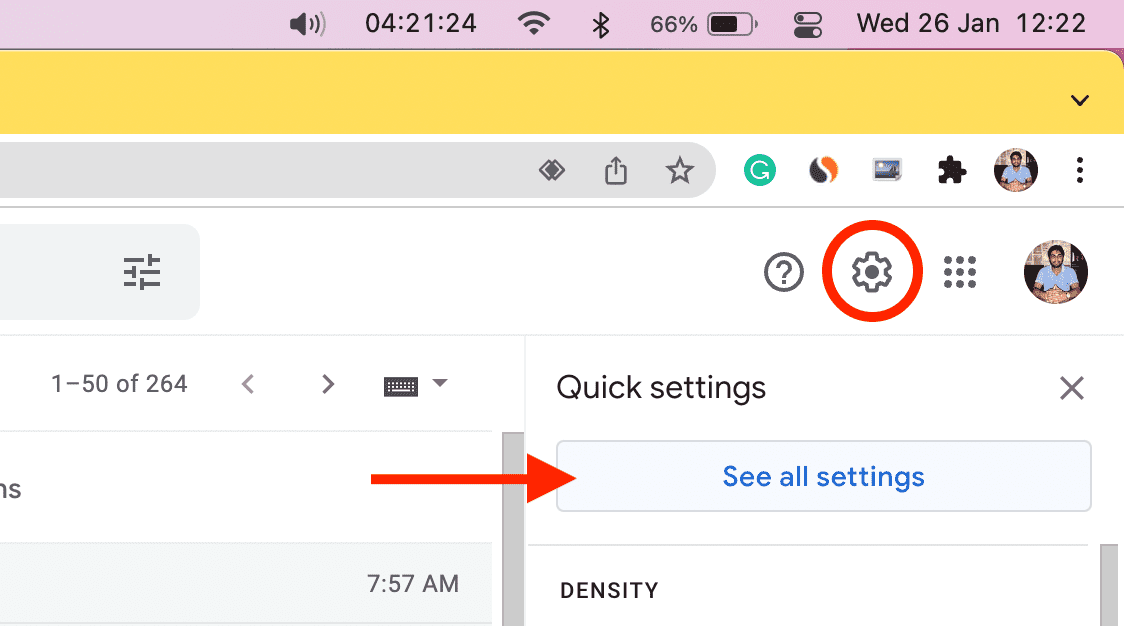
2) Click Forwarding and POP/IMAP.
3) Click Add a forwarding address.

4) Now, enter your main private email here and click Next.
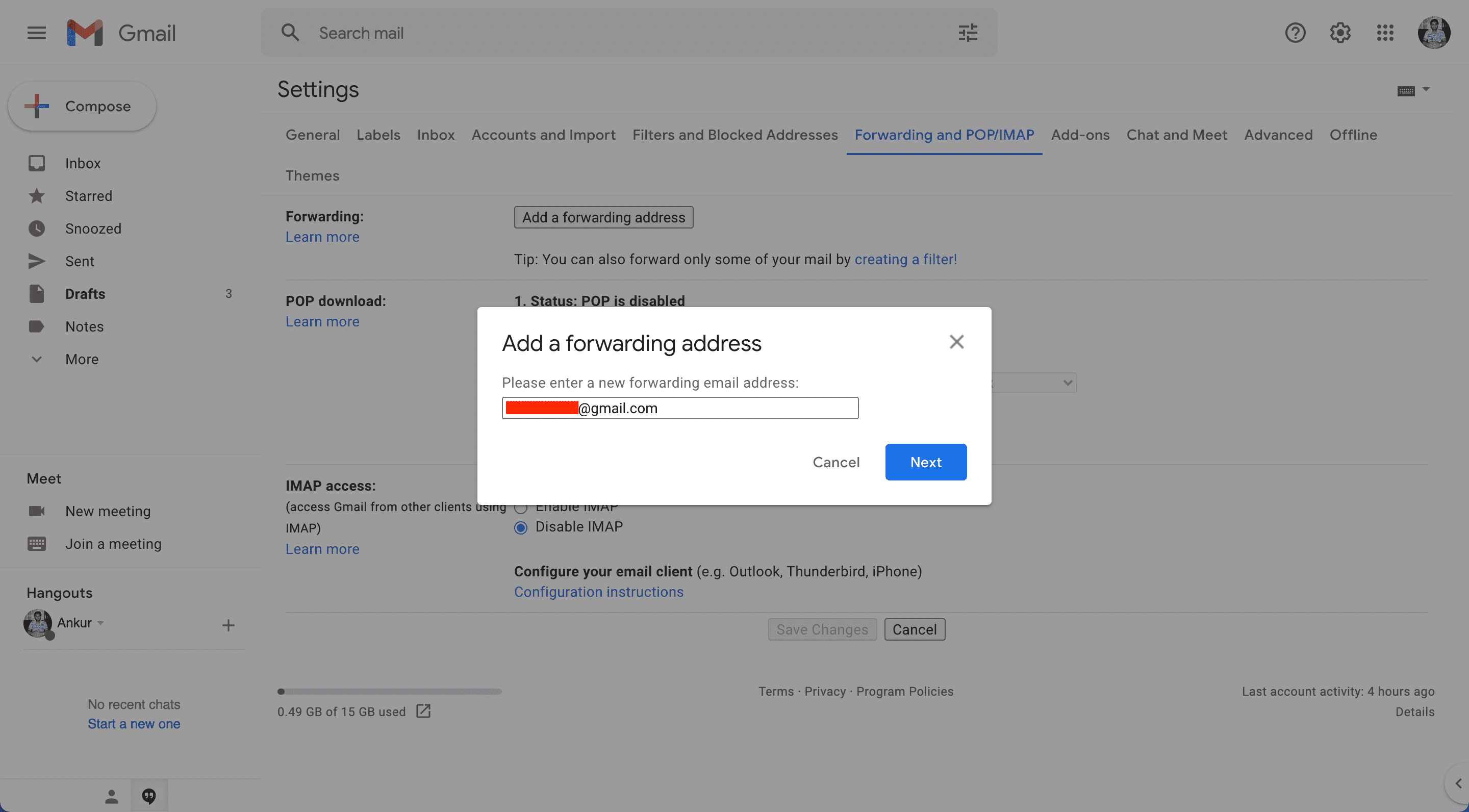
5) Click Proceed > Ok.
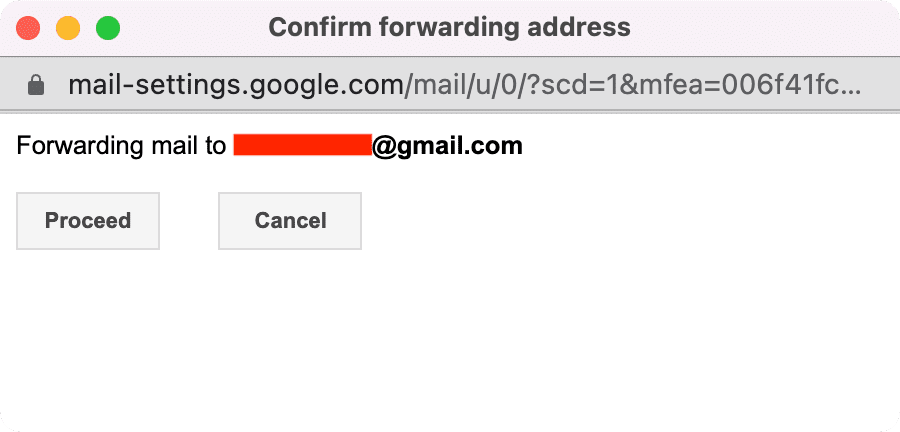
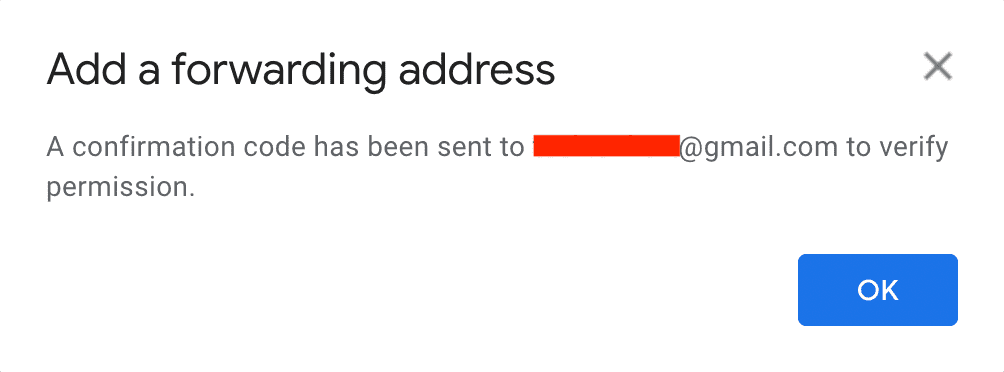
6) Open your main email and click the verification link. You can also copy the code you receive here, paste it into the second account’s verification box, and click Verify.

8) Check the box for Forward a copy of incoming mail to.
9) Finally, click Save Changes from the bottom.

That’s all there is to it!
Now, you can freely share your second email address publicly or with untrusted services. All the emails sent to this will be forwarded to your main email. You can even create a filter to forward only some of your emails.
Next, follow the steps below to ensure you can reply to these forwarded emails while being logged in to your private, main email. The receiver will see this as if the reply was sent via the second email (which they have and on which they sent you the original email).
Set up Send mail as
1) Log into your main, private Gmail account, and click the settings icon > See all settings.
2) Click Accounts and Import.
3) Next to Send mail as, click Add another email address.
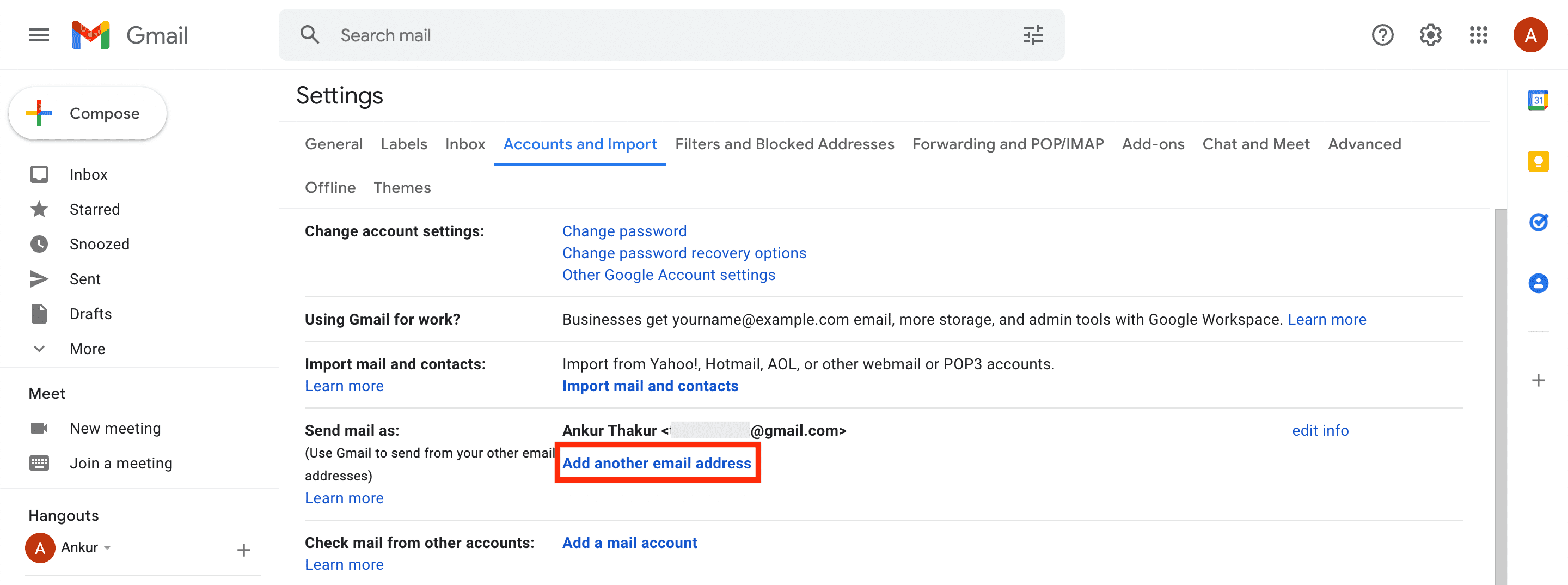
4) Enter your second email address, make sure “Treat as an alias” is checked, and click Next Step.
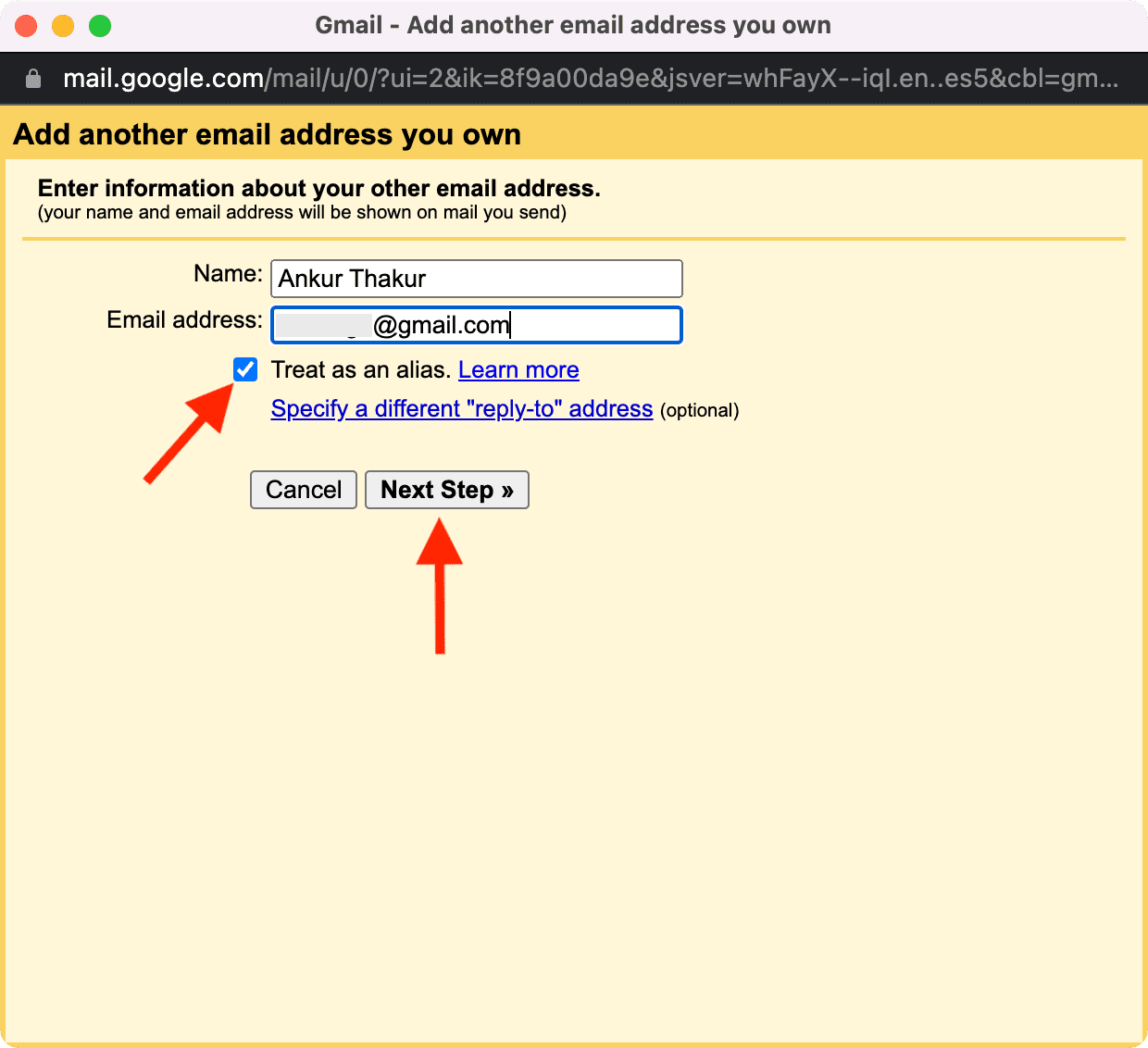
5) Click Send Verification.
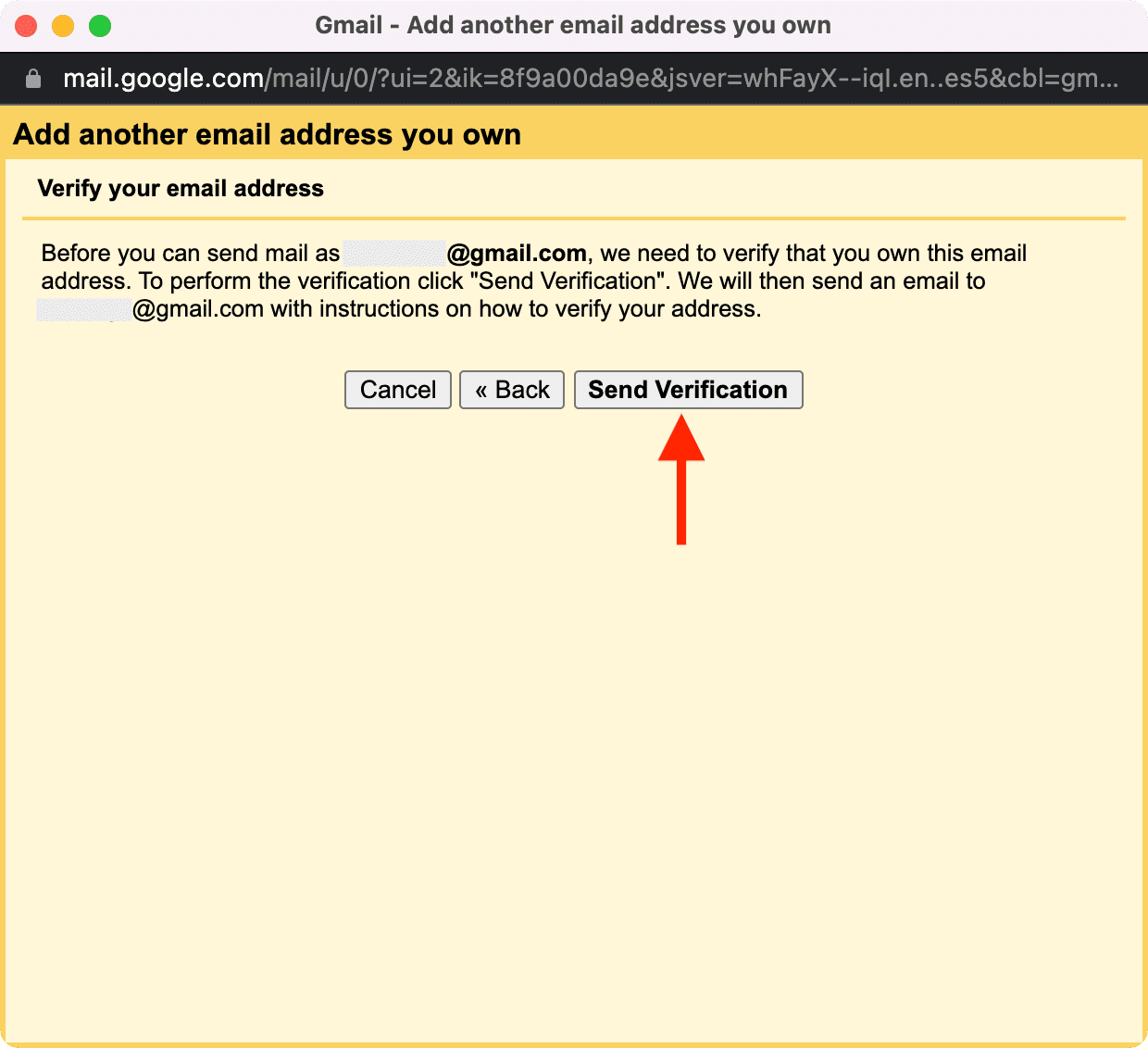
6) Open your second email address (or this same one as emails are already being forwarded), and click the link there, or copy the verification code there and paste it in this box.
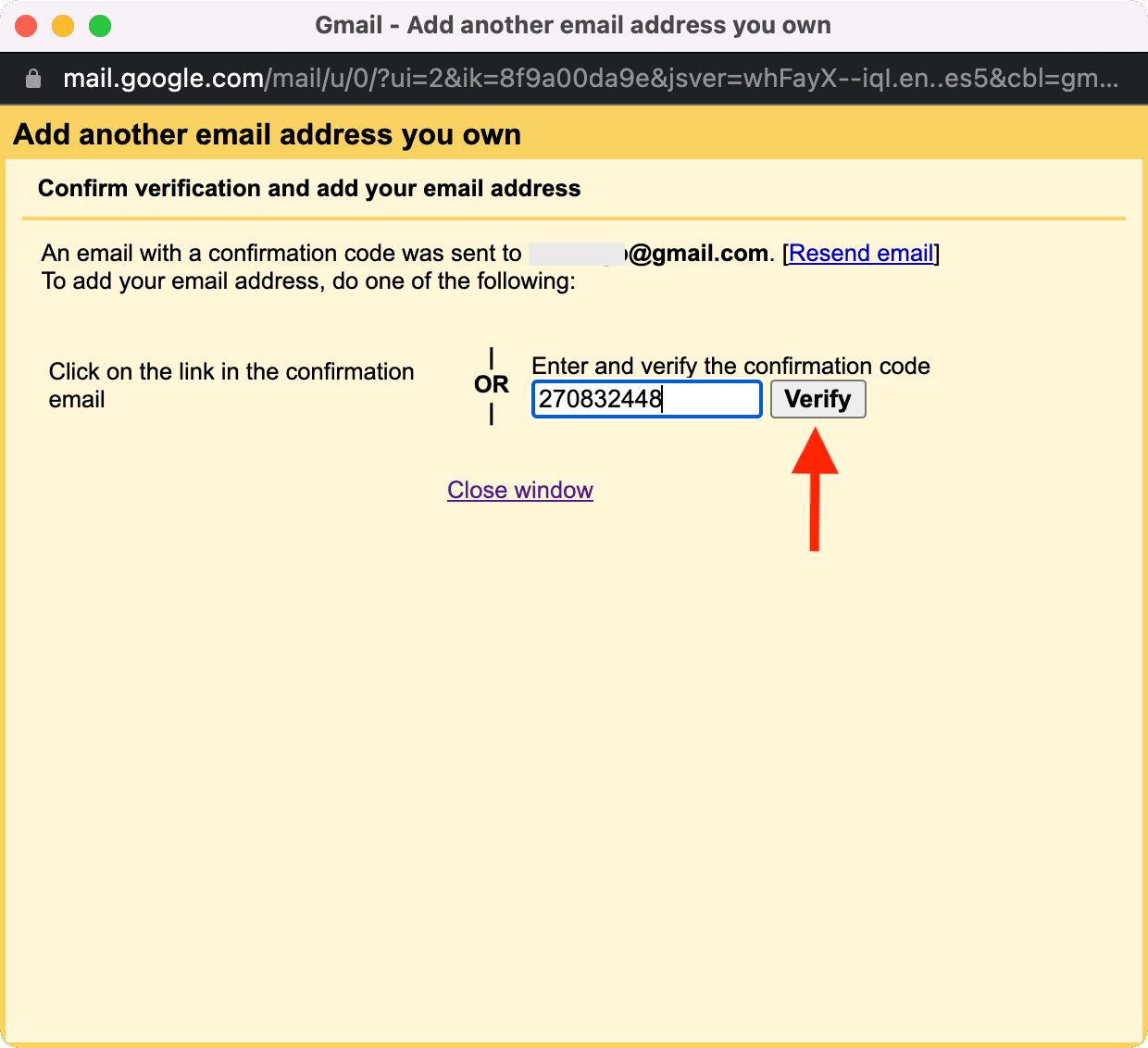
From now on, you can send emails via your second account while being logged in to your main account. Make sure the “Reply from the same address the message was sent to” option is checked. This will ensure that if someone sends you an email on your second account and you reply to it (while logged in to your main account), the sender will see your second email address and not your main one.
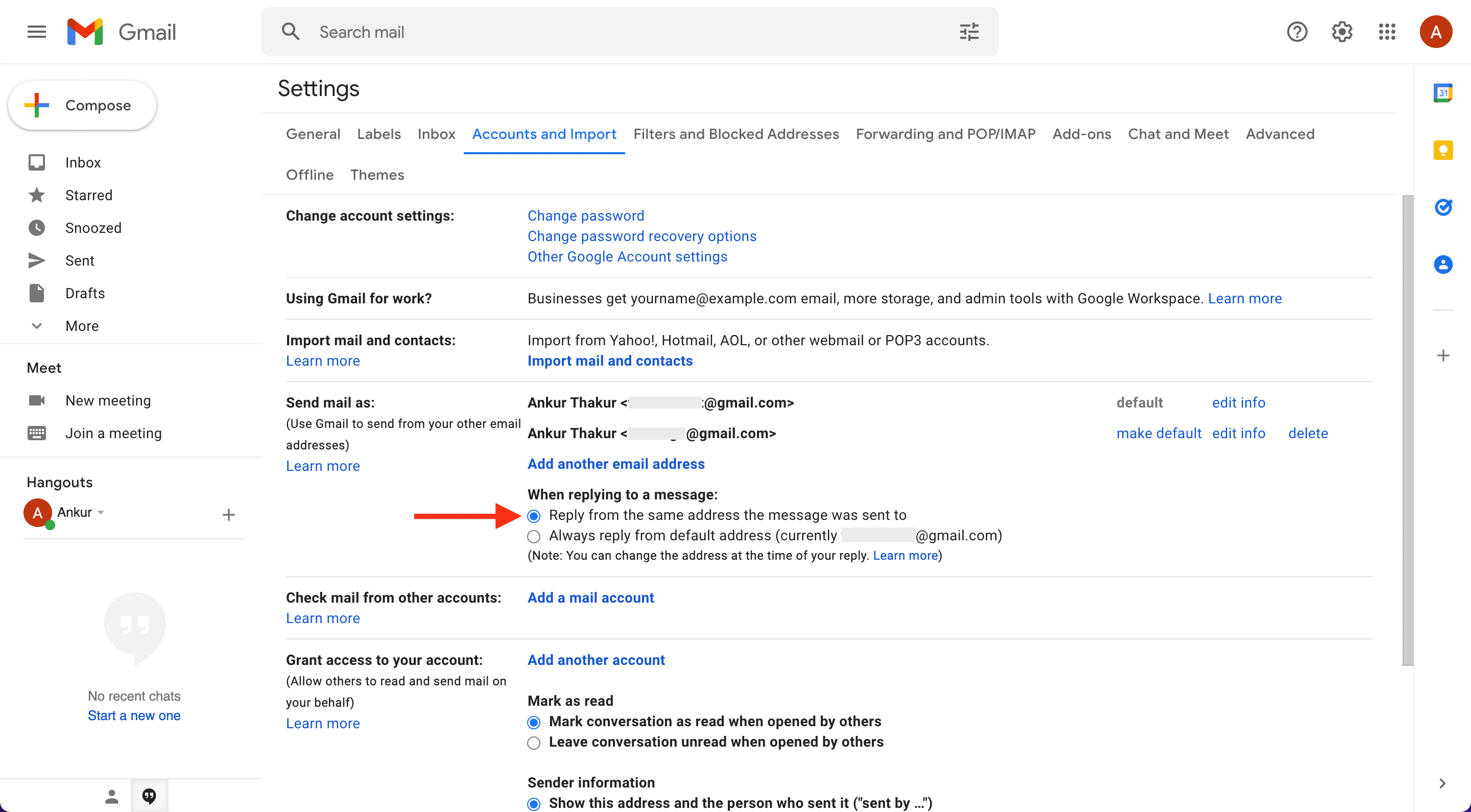
Note: Google support page says once you set up “Send mail as” and check “Treat as alias,” you can send and receive emails. But in my testing with three different Gmail accounts, it didn’t work. Therefore, I asked you to set up email forwarding (above heading) and then set up “Send mail as” to get and reply to emails of a different account from one place (your main Gmail account).
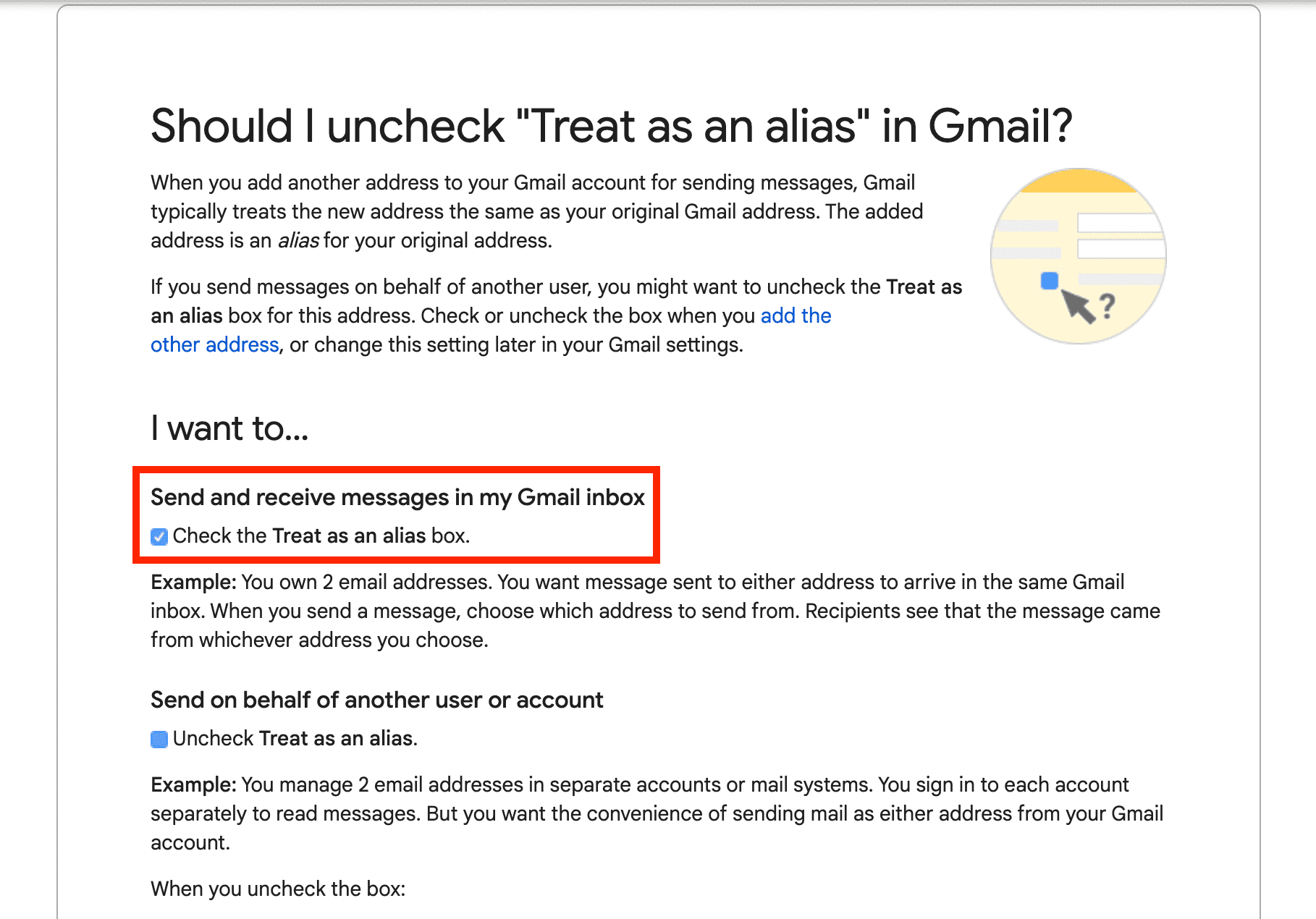
Use Gmailify
If you have an existing email account from Yahoo, Outlook, Hotmail, AOL, or a few other non-Gmail services, you can link this email account with your Gmail account. After that, you can:
- read, reply to, and organize messages from your other account just like you do in Gmail.
- get Gmail features like spam protection, improved mobile notifications, email sorting, and search, even in these non-Gmail services.
So, imagine you have an old Yahoo account that you no longer actively use. You can Gmailify your Yahoo account. After this, you can treat this Yahoo account as an alias to use for signups, share it with others, and more; no need to share your main Gmail address anywhere.
All the emails you receive at this Yahoo address will appear in your Gmail. You can see, manage, and reply to these Yahoo emails from inside Gmail.
Here’s how to link your non-Gmail account to Gmail and treat it as an alias:
1) Open Gmail, click the settings icon, and choose See all settings.
2) Click Accounts and Import.
3) Next to Check mail from other accounts, click Add a mail account.
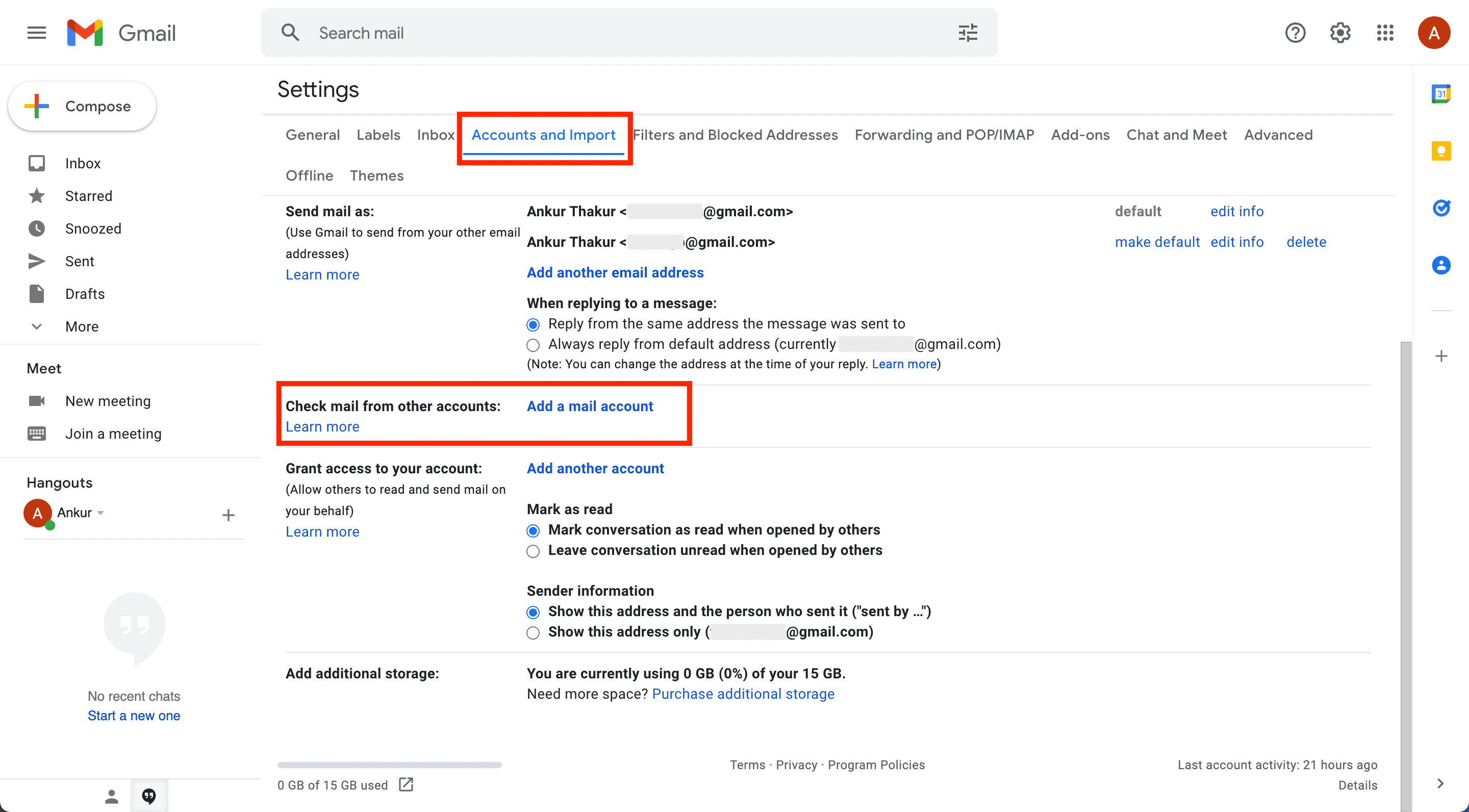
4) Enter your Yahoo, AOL, Hotmail, Outlook, or other non-Gmail account and click Next.
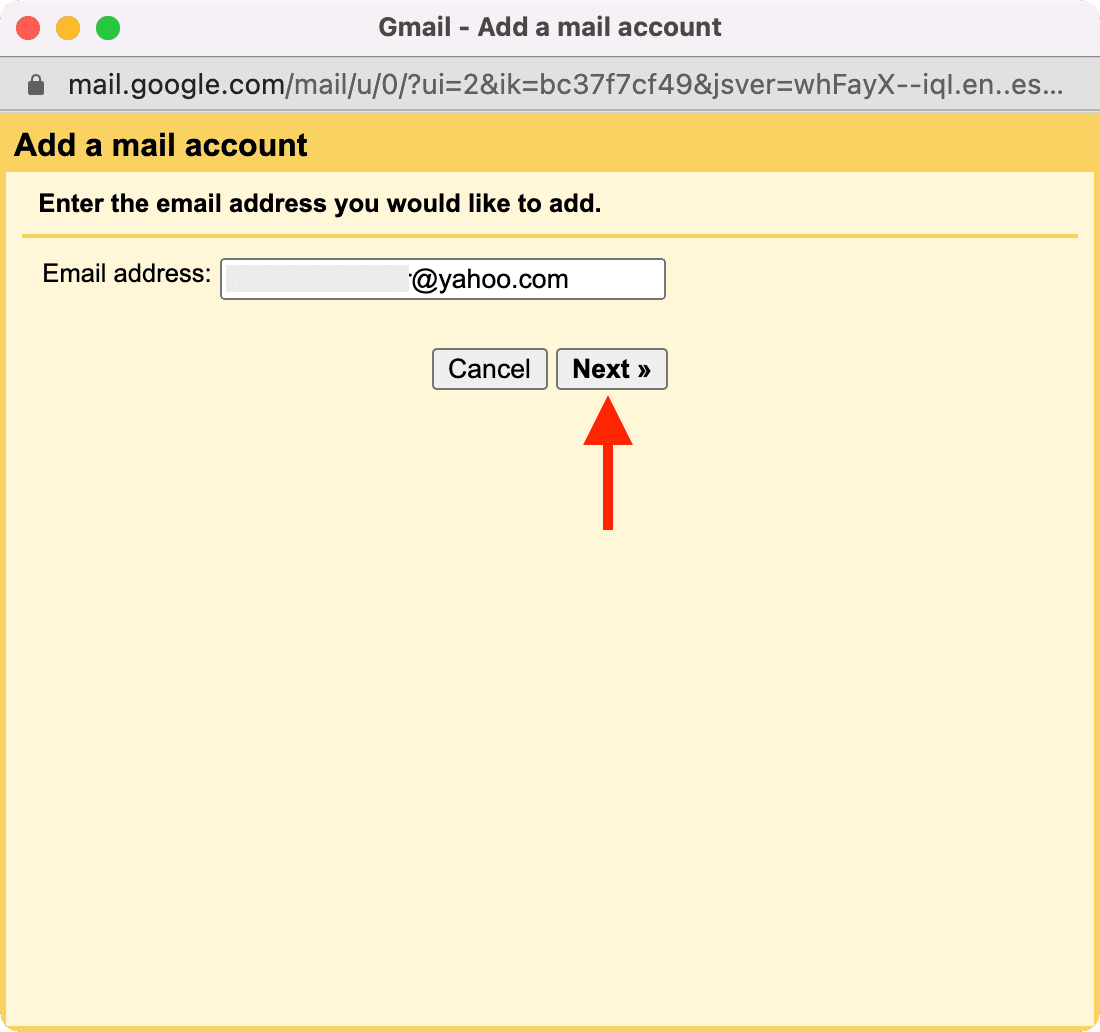
5) Make sure “Link accounts with Gmailify” is checked and click Next.
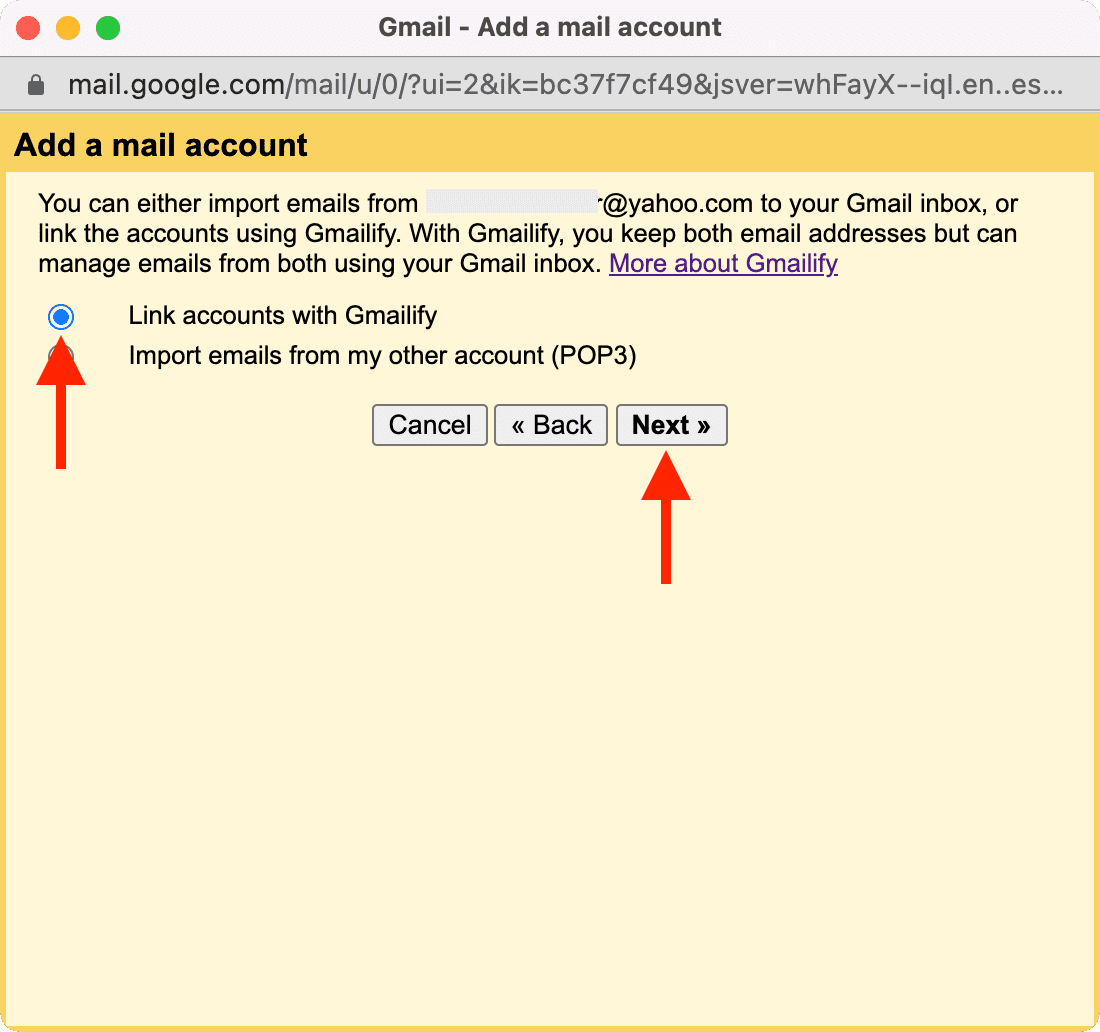
6) Sign in to your non-Gmail account and agree to let Gmail access and manage this second email account.
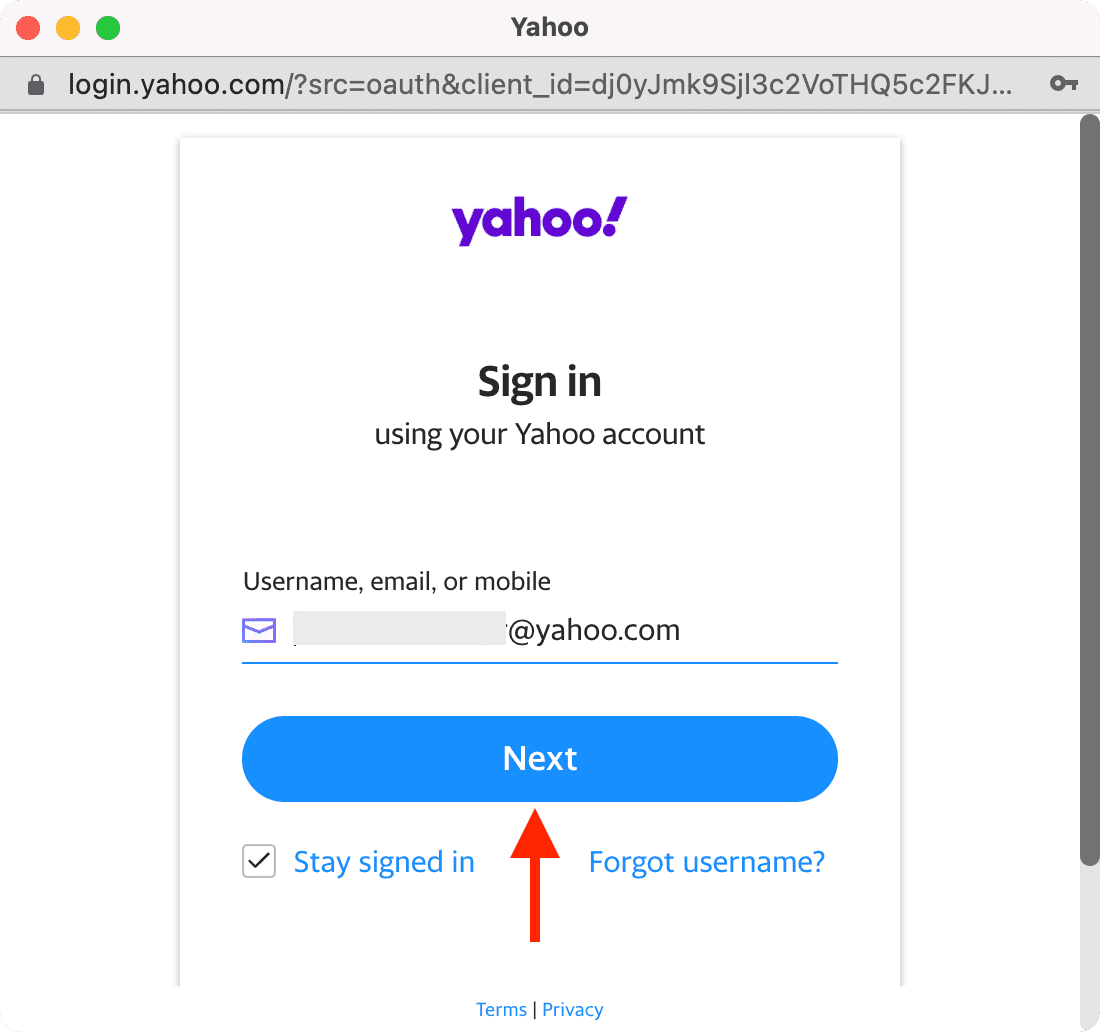

You have successfully Gmailified your other email. Now, you can use it inside Gmail with all its advanced features.
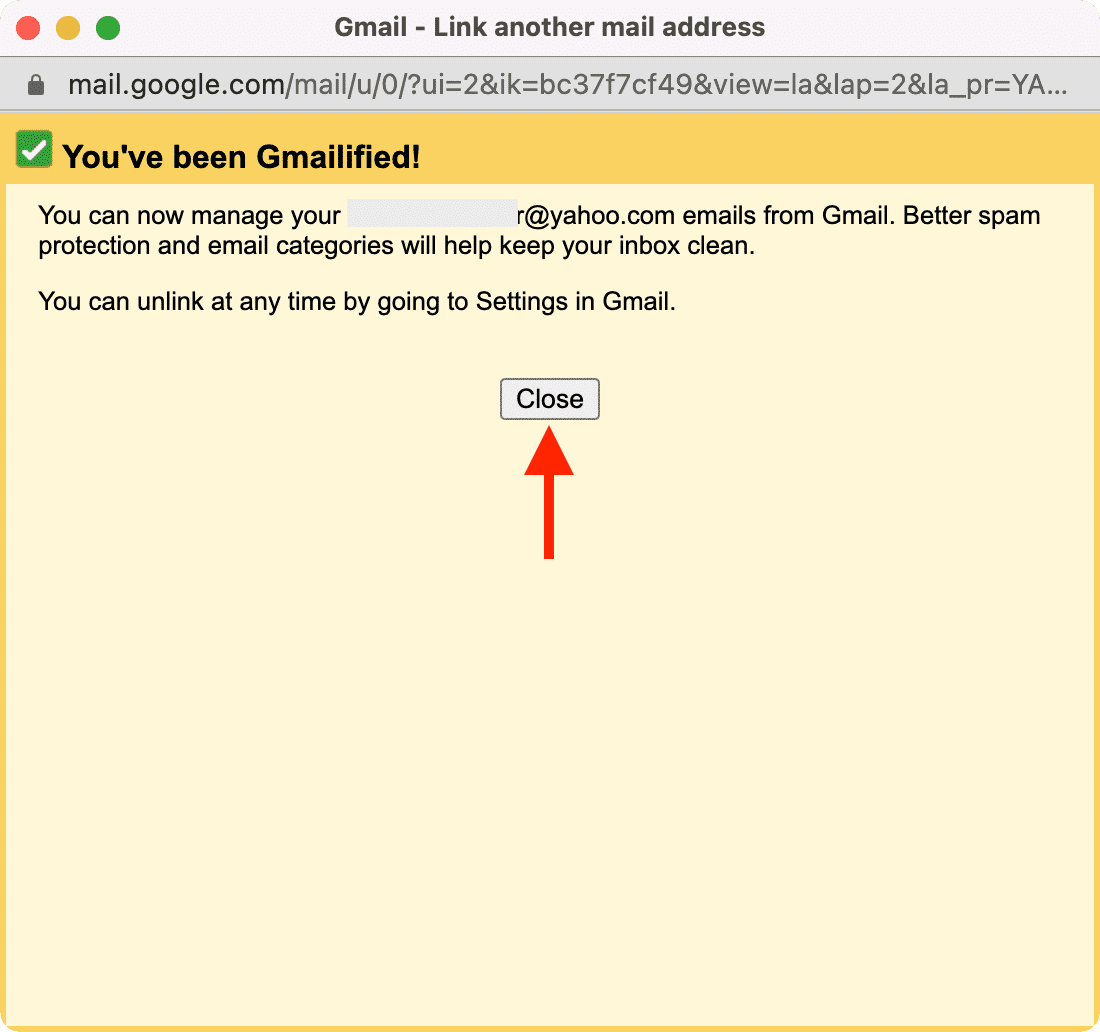
Emails you get on your non-Gmail account will appear in your Gmail account. There may be a delay of about one minute. You can also manually go to Gmail settings and click Check mail now.
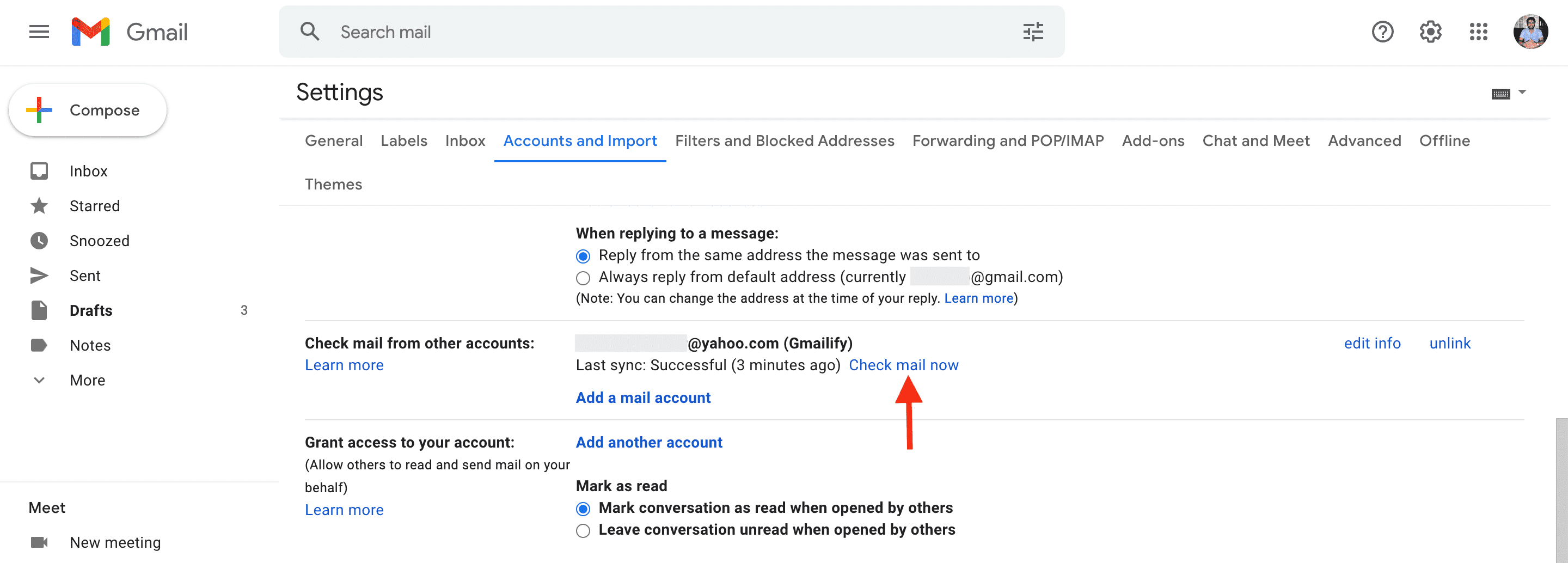
When you reply to an email originally sent to your non-Gmail account from inside Gmail, click the name, and you’ll have the option to choose which account you would like to reply with. For most cases, I would recommend using the non-Gmail account so that your main Gmail address isn’t shared with them.
Using alias in Gmail — Conclusion
By now:
- You know how to use a dot, plus sign, or @googlemail to create a temporary alias.
- You know how to set up email forwarding from one Gmail account to another.
- Plus, you also know how to add your one Gmail account to another so that you can reply to its emails using your main Gmail account.
- If you have a non-Gmail account, you know how to link it with Gmail and use it to send, receive, and reply to emails.
As far as aliases in Gmail go, this is almost everything you can do. Once again, alias in Google isn’t as straightforward and effective as what iCloud provides. So, if you can’t go through what’s mentioned above, just create an iCloud alias. Even if you don’t have an Apple device, you can create an Apple Account and use iCloud Mail in a web browser.
Public email inboxes
Finally, one more trick that I have been using for a few years to protect my main Gmail email is to use a burner email address or a throwaway public mailbox.